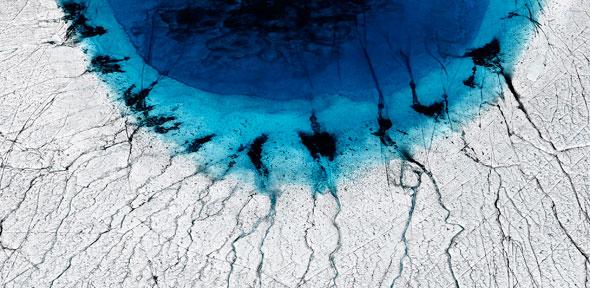SOURCE: University of Cambridge
DATE: March 14, 2018
SNIP: Researchers from the UK, Norway, US and Sweden have used a combination of 3D computer modelling and real-world observations to show the previously unknown, yet profound dynamic consequences tied to a growing number of lakes forming on the Greenland ice sheet.
Lakes form on the surface of the Greenland ice sheet each summer as the weather warms. Many exist for weeks or months, but drain in just a few hours through more than a kilometre of ice, transferring huge quantities of water and heat to the base of the ice sheet. The affected areas include sensitive regions of the ice sheet interior where the impact on ice flow is potentially large.
Previously, it had been thought that these ‘drainage events’ were isolated incidents, but the new research, led by the University of Cambridge, shows that the lakes form a massive network and become increasingly interconnected as the weather warms. When one lake drains, the water quickly spreads under the ice sheet, which responds by flowing faster. The faster flow opens new fractures on the surface and these fractures act as conduits for the drainage of other lakes. This starts a chain reaction that can drain many other lakes, some as far as 80 kilometres away.
These cascading events – including one case where 124 lakes drained in just five days – can temporarily accelerate ice flow by as much as 400%, which makes the ice sheet less stable, and increases the rate of associated sea level rise.

